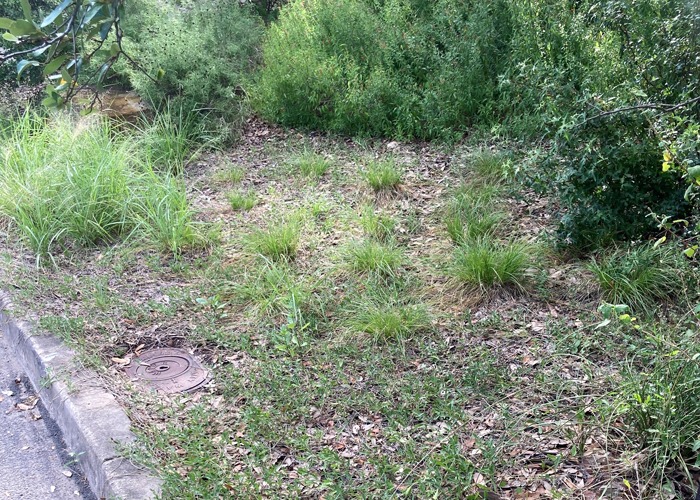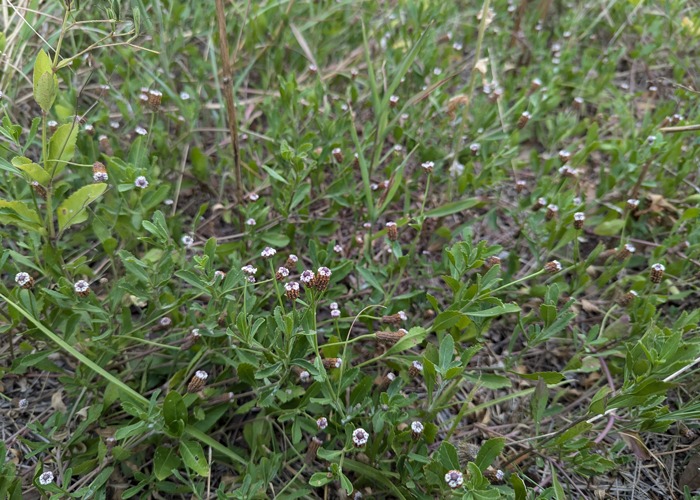This occasional series highlights ground covers and other xeric alternatives to traditional turfgrass lawns.
These wild plants aren’t grass, but they can withstand mowing and thrive in place of traditional lawns.
Many groundcover plants are available at local nurseries, but the wrong grass replacement could use just as much water as turfgrass. Last time we explored unintentional grass replacements, this week the focus is on commercially available options.
Three locally available ground covers that we tend to recommend include frogfruit, horseherb, and snakeherb. Most photos of plants, even on GardenStyleSA.com, are taken when they look their best, in spring or under irrigation. But how do they look in summer, without supplemental water?
Let’s explore these three plants, along with photos from actual San Antonio xeriscapes. The photos are of established plants that only receive water whenever Mother Nature provides it.
Frogfruit (Phyla nodiflora) is a crowd pleaser for its cute name and attractive white flowers. This ground cover can stay green with just sporadic summer rains, takes a bit of foot traffic and can be mowed. Add to this that is it the host plant for phaon crescent and white peacock butterflies, and it’s clear there’s a lot to love about frogfruit.
From the rainy summer of 2021:

Same location this year. (Don’t worry, it’ll bounce back when rains are more abundant.)

Frogfruit won’t be quite as vigorous in full sun locations but still holds its own:

Horseherb (Calyptocarpus vialis) is mentioned a lot as a possible groundcover, and it deserves another shout out. Horeseherb shows how a weed can become accepted into formal landscapes. It only takes a change of perception.
July is the time of year that Horseherb begins to show signs of stress as evidenced by the photo, but it will bounce back in fall and winter. Compare it to the photo of false honeysuckle (also known as Gregg’s honeysuckle) growing nearby and you’ll see why I think it may be time for horseherb to pass its crown.
By summer, horseherb’s spring growth begins to go dormant. The roots will still hold on to the soil, but it won’t return to vigor until fall:

Compared to nearby horseherb, false honeysuckle is still going strong:

Snakeherb (Dyschoriste linearis) A little taller than the previous two plants, snakeherb is a nice filler plant and less of a ground cover you’d want to walk on. In spring and early summer, the purple flowers tucked into the leaves can be a little hard to see. In nature, snakeherb is generally found mixed in with grasses, but in gardens with a bit of weeding, it can become a thick stand of short stems. (From afar it resembles rosemary.) It’s one of the host plants for the common buckeye butterfly.
This snakeherb is weathering the heat nicely. Notice the stems of spring wildflowers left to reseed naturally:

Glamour shots of springtime plants looking their best are fun to look at, but here we also see how these plants are faring under difficult conditions. The gardeners who allowed me to take photos of these plants don’t water their landscapes — they rely solely on rainfall.
Remember, we’re in drought and have been for a few years now. Considering that, these plants are looking pretty good.


